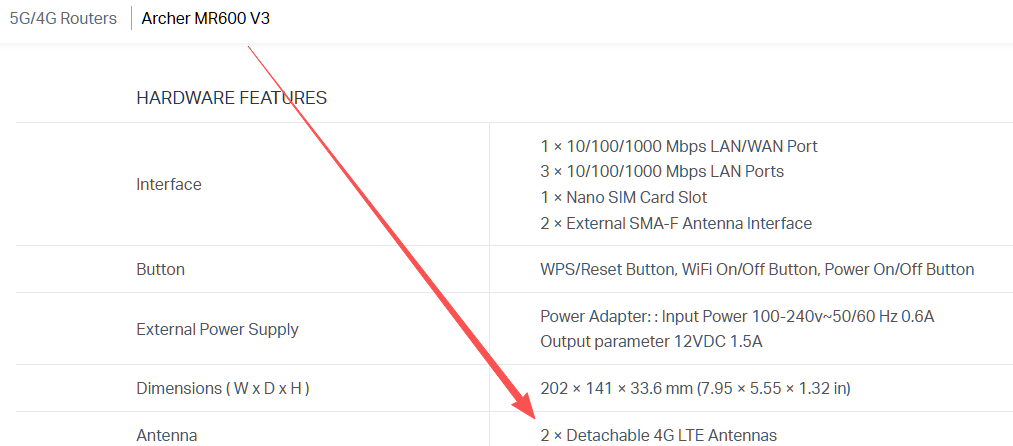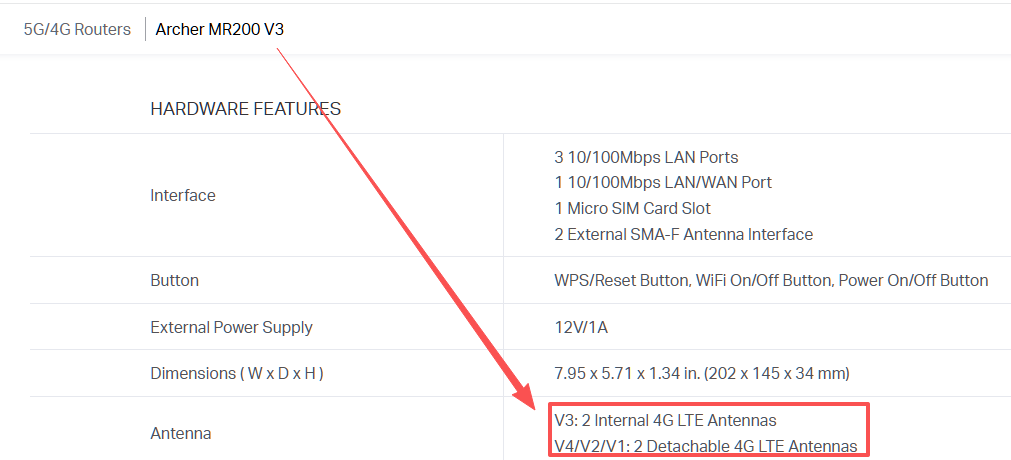Knowledge Base A Comprehensive Guide to LTE Gateway Router External Antennas
We understand that customers may have queries about the external antenna on TP-Link mobile routers and may wish to explore replacement options. This article aims to provide a comprehensive overview addressing these concerns.
Why are external antennas necessary?
While our 4G/5G routers are primarily designed for indoor usage, it is advisable to position them near a window to maximize performance. However, signal reception could be subpar, particularly if the nearest cell tower is distant or positioned in an alternate direction. External antennas, when mounted on the exterior of a building or vehicle, excel at overcoming physical barriers like concrete walls, ensuring enhanced signal reception.
How to check whether my device supports external antennas
The router has reserved external antenna ports, or the original LTE antennas are detachable.
Currently, most 5G routers have reserved external antenna ports. LTE routers might vary in models. Please refer to the product specification. For example, Archer MR600 V3 has 2 detachable 4G LTE Antennas while Archer MR200 V3 has 2 internal 4G LTE Antennas, which means the two external antennas are for Wi-Fi only.


Precautions for replacing the external antennas
An external antenna may not always improve the mobile signal due to factors like incorrect installation, Signal mismatch, extension cable loss, as well as potential incompatibility problems. The original LTE/5G antennas are always the first choice.
If you already have a good mobile signal, the original or built-in antenna should be sufficient. You could refer to the following table to decide if external antennas are needed:

Key Points when replacing the external antennas
-
(For LTE Gateway)When replacing original antennas, both antennas must be changed simultaneously, and the replacement antennas should have the same specifications.
This is because the two antennas work together. Replacing only one antenna may not yield the desired effect and could potentially worsen signal reception.
-
The external antenna interface should match the reserved external antenna ports.
-
The external antennas should cover the same frequency range as the original antennas.
| Frequently Asked Models | The external antennas should support the following working bands | The antennas should have the matched connector type | |
| Archer NX200 | N1/N3/N7/N38/N40/N41/N77/N78 |
Archer NX200:SMA Female Antenna: SMA Male |
 |
| Archer NX600 | N1/N3/N7/N38/N40/N41/N77/N78 | Archer NX600: SMA Female Antenna: SMA Male |
|
| Deco X50-5G-V1 | N1/N3/N5/N7/N8/N20/N28/N38/N40/N41/N77/N78 | Deco X50-5G_V1:RP-SMA Female Antenna: RP-SMA Male |
|
| Deco X50-5G-V2 | N1/N3/N5/N7/N8/N20/N28/N38/N40/N41/N75/N76/N77/N78 | Deco X50-5G_V2:SMA Female Antenna: SMA Male |
|
| Deco X80-5G | N41/N77/N78 | Deco X80-5G: SMA Female Antenna: SMA Male |
|
| Deco BE65-5G | N1/N3/N5/N7/N8/N20/N28/N38/N40/N41/N77/N78 | Deco BE65-5G: SMA-Female Antenna:SMA Male |
|
| M8550 | N2/N5/N12/N14/N25/N29/N30/N41/N48/N66/N71/N77 | 2× TS-9 Antenna Ports |  |
How to enable the External antennas on the web UI/Deco APP
-
On the Archer web UI, please enable external antennas under Advanced>Network>Internet >Mobile WAN
-
On the Deco APP, please go to More > External Antennas
***Note: Confirm Archer and Deco 5G routers work under "MBB" or "4G/5G Router" Mode!
Q&A
-
Can the antenna be placed far away from the router using an extension cable?
Yes, it is possible to use an extension cable; however, keep in mind that signal attenuation can occur with longer cables. Therefore, it is not recommended to use excessively long extension cables.
-
Can replacing the antenna enable support for a 4/5G frequency band that the router doesn't currently support?
The support for specific 4/5G frequency bands depends on the 4/5G module within the router's hardware. It is not solely dependent on the antenna. Therefore, if the router does not support a particular frequency band, it cannot be enabled simply by replacing the antenna. When replacing antennas, it is crucial to ensure that the supported frequency range matches the original antenna to maintain compatibility.
-
Would there be any recommended 5G external antennas?
As the performance of 5G external antennas is closely tied to the current SIM operators and nearby cell towers, we haven't conducted extensive field tests. Unfortunately, there isn't a recommended list of external antennas available. However, if you've tested any specific models, we would greatly appreciate your input! Please share your recommendations in the comments below, along with your SIM carrier, as this information would be incredibly helpful for other users.
